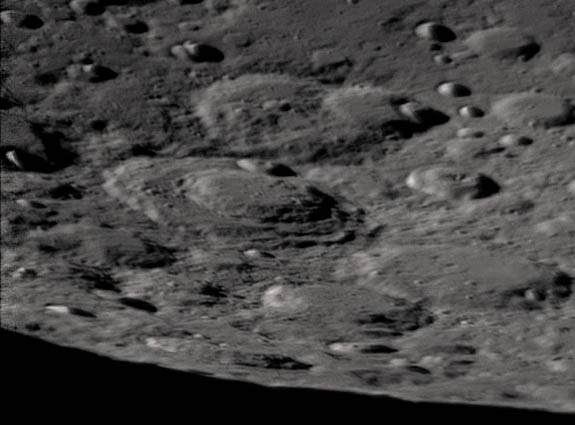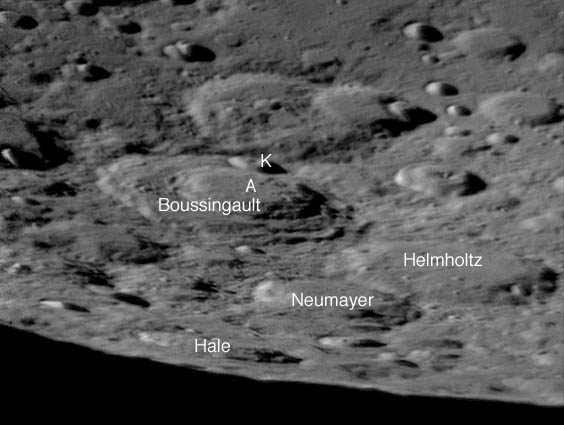Difference between revisions of "January 25, 2016"
(Created page with "__NOTOC__ =S by SE= Originally published March 31, 2005 <!-- Start of content --> <table width="85%" border="0" align="center" cellpadding="6" cellspacing="2"> <tr> </tr> </t...") |
(No difference)
|
Latest revision as of 02:05, 25 January 2016
S by SE
Originally published March 31, 2005
Image Credit: Paul Maxson |
|
S by SE The region near the lunar south pole is often observed because of the attractions of its tall mountains and shadow-shrouded craters. But away from the pole, especially sliding along the limb to the east are less familiar sights with craters that few of us could easily name. This image shows one cluster that is remarkable because of its crater-within-crater appearance. Boussingault is an older, large (130 km) crater with remnant hints of its wall terracing. Boussingault (mouseover) probably originally had a central peak but a subsequent slightly off-center impact produced the large crater Boussingault A that forever erased it. A later impact made the smaller crater K, which apparently has a small central peak. Such peaks are rare in the highland, most of the older craters look like Helmholtz, with its smooth, gray flat floor. This image shows a beautiful nearly edge on view of the 84 km wide fresh crater Hale. This Tycho look-alike has terraced walls and massive central peak and would be a grand sight if it were better placed for Earth observers. Technical Details: Related Links: Yesterday's LPOD: A Looong Lunar Exposure Tomorrow's LPOD: LPOD Image of the Month - March 2005 |
|
Author & Editor: |
COMMENTS?
Register, Log in, and join in the comments.





